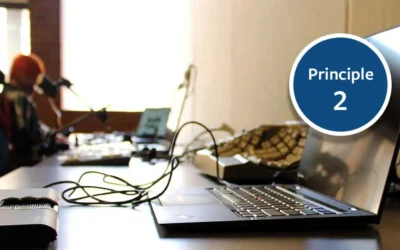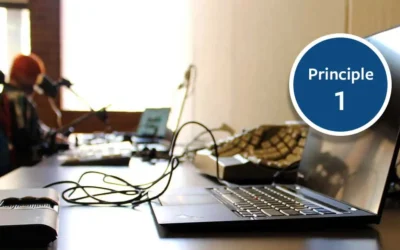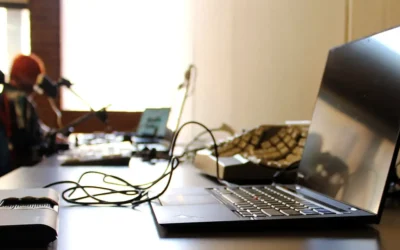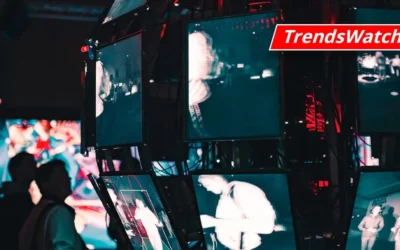The Benefits of an Integrated Museum CMS Front and Back-End

Rachael Cristine Woody
In this miniseries we’ve reviewed the different ways front-end portals for Museum Collection Management Systems (CMS) are offered and the costs involved when working with a front-end that’s separate from the CMS or offered as an “add on” to the back-end. This post concludes the miniseries with a review of benefits that come with a fully integrated front-end portal, and outlines the circumstances where an integrated front and back-end make sense.
This post is of particular use to museum staff who need supporting arguments to convince their boss to invest in a fully integrated CMS front and back-end.
What’s the Difference Between an Optional Back-end and an Integrated Back-end?
First, here’s a quick review of the main difference between an optional or “add on” CMS front-end and an integrated front-end.
An optional front-end portal is one that wasn’t built as a part of the CMS as a whole. The front-end is considered an optional feature and one that can be added onto the existing CMS product—a product that by default is just the back-end.
A fully integrated fronted portal is one that was built as a part of the museum CMS and is considered one whole unit versus an optional feature. The front-end portal functionality is completely integrated, equally invested in, and will grow as a part of the CMS product.
The Benefits of a Fully Integrated Portal
The benefits of choosing a fully integrated museum CMS are multiple. Not only does the integration help save direct and indirect costs, it also limits data issues, and cuts down on trouble-shooting and maintenance work. Here’s a full list of those benefits spelled out:
- An integrated front and back-end saves staff time and money during implementation, use, and maintenance.
- Integration eliminates “lost in translation” issues with data from one system to another.
- Time spent trouble-shooting and custom code needs is decreased significantly.
- Presentation of a portal that meets Web Content Accessibility Guidelines (WCAG) will be more easily achievable.
- The integrated portal will have to-the-minute updated information provided without having to refresh or re-index the front-end.
- An integrated portal will be more responsive to current needs—needing to work only with one system for the design and information flow.
A fully integrated portal is usually the best choice in any museum situation, and particularly so if the following conditions are present:
- The museum is short on staff time and expertise.
- The museum is short on cash for implementing two platforms, creating custom code, and providing ongoing maintenance.
- Museum staff are stretched thin and need one seamless system for sustainable workloads.
- The museum staff want to meet user expectations by offering a visually dynamic and robust front-end portal.
- Museum staff want to invest equally into their museum front-end as well as back-end because they understand that both sides of the CMS are equally important.
Conclusion
When it comes to the front-end portal for a museum CMS the best bet is to purchase a CMS platform that fully integrates the front and back-end. This choice will help you save staff time and money, will reduce the issues and workarounds needed for the portal to operate optimally, and will deliver a more engaging user experience to your visitors.
Additional Reading
If your museum is embarking on a the search for a new museum CMS then please check out the following posts on Lucidea’s Think Clearly Blog: 3 Things to Look for When Choosing a Museum Collections Management System, How to Begin Your Search for the Right Museum CMS, How to Form a Museum CMS Procurement Team, How to Test, Vet, and Purchase a New Museum CMS, and How to Identify Specifications for a New CMS. And don’t forget to grab your free e-copy of my book: How to Select, Buy, and Use a Museum CMS.

Rachael Cristine Woody
Register here for Rachael’s webinar, “How to Work with a Consultant on Museum Digital Projects” on September 28, 2022. Ms. Woody advises on museum strategies, digital museums, collections management, and grant writing for a wide variety of clients. In addition to several titles published by Lucidea Press, she is a regular contributor to the Think Clearly blog and an always popular presenter.
Never miss another post. Subscribe today!
Similar Posts
Museum Collections Online with Accessibility Principle 2: Operable
Compliance with WCAG Version 2.1 Principle 2: Operable
Museum Collections Online with Accessibility Principle 1: Perceivable
Compliance with WCAG Version 2.1 Principle 1: Perceivable, affecting information published from museum CMS to an online portal; expert guidance
Accessibility Standards for Museum Collections Online
A museum’s compliance with the ADA Title II 2024 update has benefits for its online content and for the museum’s community of users.
Museum TrendsWatch 2024: Digital Twins and Doom Loops & Combatting the Loneliness Crisis
Digital Twins is the construction of a digital surrogate for a person, place, or thing—one of several new concepts and trends in the museum sector.




Leave a Comment
Comments are reviewed and must adhere to our comments policy.
0 Comments